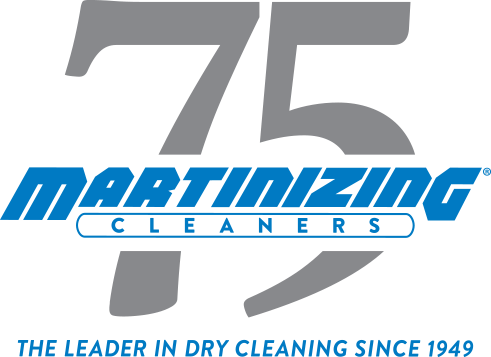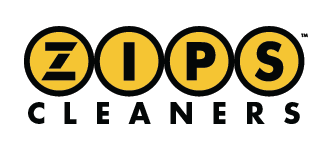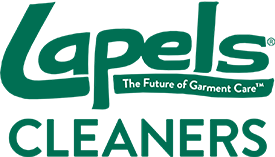
Martinizing Dry Cleaning
Martinizing stands tall as a distinguished figure in the dry cleaning sector, boasting over six decades of pioneering innovation and leadership.

Zips Dry Cleaning offers a comprehensive range of services designed to meet the dry cleaning and laundry needs of a diverse customer base.
$669,800

Speed Queen stores redefine the traditional laundromat experience, setting a new standard in customer satisfaction and safety.
$1,000,000

Lapels Dry Cleaning offers a comprehensive range of dry cleaning and garment care services, including cleaning, pressing, alterations, and repairs.
$431,617
Dry Cleaning Industry Overview
Laundry and dry cleaning are something almost everyone does on a regular basis. This applies to both individual customers and business owners. On the business front, enterprises such as hospitals, hotels, restaurants, beauty salons and spas, factories, and others make regular use of this service because of the high number of soiled clothing, bedding, towels, tablecloths, and other items that accumulate at the end of each week.
The demand for such services is extremely high and is only projected to grow over the coming years. In fact, in the US alone, the market size value of the dry cleaning and laundry industry in 2023 was $73.55 billion, with revenue forecasts of up to $118.71 billion until 2030. The compound annual growth rate (CAGR) for this market is in the region of 7% for the same period, making this an enticing opportunity for aspiring business owners.
If you want to know more about this industry, the following interesting facts and statistics will shed greater light on the market size and the potential for profitability.
- Depending on the business size and location, coin laundromats typically generate between $15,000 and $300,000 per year.
- Meanwhile, the gross revenue of laundromats in the United States is in the region of $5 billion.
- The sector is typically characterized by low employment rates, with around 5,000 people being employed in the industry as of 2020.
- The average cost of dry cleaning garments is in the range of $6.50 to $20.
- Factors that influence the industry’s growth include the demand for clean clothing, specialist cleaning solutions for more sensitive garments, and convenience coupled with affordability. Other contributing factors include the state of the economy. It is argued that the better the economy is performing, the more people seek out dry cleaning and laundry services due to higher disposable income as dry cleaning is considered a luxury.
- In terms of the commercial laundry industry, it generates around $13.3 million in revenue per year, which is expected to rise at 4.35% CAGR until 2025.
- Some of the greatest costs associated with running a laundry or dry cleaning business include costs of water, energy, and equipment. This is in addition to the specific location and the demographics in the area.
- The demand for eco-friendly and energy-efficient businesses is rising globally, and this is an important trend worth considering for those interested in a laundry or dry cleaning business.
- There are around 18,649 laundromat businesses in the US, which includes both commercial laundry services and coin-use laundry machines.
- Regarding employment, these are not labor-intensive businesses and most employ between one to two people to run the laundromat. Their responsibilities often revolve around monitoring the performance of the laundromat, keeping the premises tidy, monitoring the machines for any mishaps, and monitoring consumers.
- Regarding pricing of laundromat or dry cleaning services, the average price is around $10. However, pricing is highly dependent on the type of garment and the quantity required to be cleaned. Examples of average prices include the following:
- Draperies and comforters: $20 – $40
- Wedding dresses and tuxedos: $500 or more
- Shirts: $6.50 – $8
- Pants: the average price is $7
- Suits: $15
- Coats: $13
- Dresses: $11.25 – $20
Dry Cleaning and Laundry Industry Trends in 2024
Just like all industries, the dry cleaning and laundry industry is underpinned by trends driving it forward. Some examples of these trends are:
- Sustainability: Many customers, both residential and commercial, are seeking to patron businesses that are sustainable and environmentally-friendly. People want their principles to align with the businesses they support. This is why there is a trend in the laundry industry that shows an uptick in demand for lower water usage, energy efficiency of washing machines, eco-friendly and biodegradable detergents and cleaning supplies.
- Convenience: Doing laundry takes time and is also labor intensive. Consumers are increasingly seeking convenience by choosing local laundromats that save them time and money. Their ability to offer fast turnaround times in a society that’s constantly in a hurry means more convenience offered to customers, thus driving the trend towards a faster paced service with a local footprint.
- Automation and intelligent solutions: What is more, managing laundry remotely is now possible with intelligent washing machines that offer features such as delayed start, remote control, automatic dispensing and more. This can help consumers save time and effort.
- Delivery and pickup services: As an added feature of laundromat services, consumers can now enjoy laundry pickups and deliveries to their homes or business premises, saving them time and effort.
- Health and wellness: With a greater influence of hypoallergenic detergents, people with sensitive skin can also take advantage of such services as they lower the risk of skin irritation and allergies. Another innovation in the industry is ozone laundry systems, which use ozone gas to sanitize and clean clothes instead of chemicals used in typical washes. Furthermore, UV light is an extra service offered that eliminates germs and viruses that are captured in dirty garments, creating more hygienic laundry.
Why you should consider investing in a dry cleaning franchise opportunity
Owning and running your own dry cleaning franchise comes with a number of distinct advantages. Let’s explore some of these to help you see if buying a dry cleaning franchise for sale is the right choice for you.
- Buying into a laundry franchise means buying into an established brand with an already-established industry reputation that usually takes years to build up from scratch if you were to start a business on your own.
- The marketing of a laundry franchise for sale is either carried out by headquarters or you are fully empowered and equipped to handle your marketing efforts locally. This means you’ll get extensive support in promoting your brand to your local community, and you can thereby draw in more customers to your business.
- Buying a laundry service franchise also comes with extensive training and support, which means that you’ll never feel alone or isolated when running your business. Most laundry franchise opportunities include initial and ongoing training that equips you with all the knowledge and tools to handle the daily operations of your business smoothly.
- Whether you choose a coin laundry franchise, self-service laundry, or an eco-friendly dry cleaning franchise, you’re much more likely to secure funding from financial lenders and institutions than a startup would. Furthermore, many laundromat franchises offer discounts and incentives for veterans, lowering the franchise fee and making entry into the business world easier and more affordable.
How much does it cost to open a dry cleaning franchise?
The cost of starting a franchise laundry business will depend on several factors, including the size of the business, its location, the number of employees, the quantity of equipment and washing machines your location will have, and others. The franchise fee hovers in the region of $50,000, although the initial investment can exceed the $1-million mark.
Regional Growth Opportunities for Dry Cleaning and Laundry Franchises
To help you identify the most promising markets for your dry cleaning and laundry franchise, we’ve divided the United States into four primary regions—Northeast, Midwest, South, and West. Each region presents unique prospects for business expansion, driven by lifestyle trends, population density, and the consistent demand for reliable garment care services.
Northeast:
Midwest:
- Illinois
- Ohio
- Michigan
- Indiana
- Wisconsin
- Minnesota
- Iowa
- Missouri
- North Dakota
- South Dakota
- Nebraska
- Kansas
South:
- Florida
- Georgia
- South Carolina
- North Carolina
- Virginia
- Maryland
- West Virginia
- Kentucky
- Tennessee
- Alabama
- Mississippi
- Arkansas
- Louisiana
- Texas
- Oklahoma
West:
- California
- Nevada
- Arizona
- Washington
- Colorado
- Oregon
- Utah
- Idaho
- New Mexico
- Alaska
- Hawaii
- Montana
- Wyoming